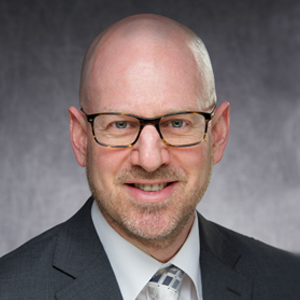Understanding faculty salaries
The transition from senior postdoctoral fellow to assistant professor is accompanied by one of the most dramatic percentage increases in salary and benefits that many academic scientists ever experience. Compensation is not only greater for faculty members but also softer, more variable and more nuanced than postdoctoral compensation in terms of long-term commitments. Much information on faculty salary and benefits packages is available from university websites. Other information is opaque. Here, we’ll try to shed some light on faculty compensation.
Benefits
Professional benefits, typically consisting of a package of health, life and disability insurance and a contribution to retirement, are palpable indications of one’s arrival as a faculty member. All of the fine print matters: The institution typically provides an allowance with which individuals choose specific benefits. The retirement contribution is typically of a defined contribution type — the faculty member elects how to invest within the rules of the program. As financial advisers always say, past performance is no guarantee of future returns. It’s definitely worth spending a quiet weekend making benefits decisions.
Benefits cost real money. This becomes apparent when faculty members prepare grant budgets that include effort of faculty, trainees and staff. Faculty benefits, being more generous than trainee benefits, cost more: typically about 30 cents for every dollar of faculty salary.
Who pays faculty salaries and for how long?
Postdoctoral fellows are typically hired by faculty members on one-year renewable agreements subject to performance and the availability of funds. That’s the definition of soft money: When the grant used to pay the fellow goes away, the position may go away. At many institutions, the longer a fellow is an employee, the more he or she is afforded furlough notice and the right to interview for other positions. However, postdoctoral fellowships are meant to be impermanent training positions and are treated accordingly by human resources departments.
Academic units that hire new faculty members may or may not have long-term plans to fund the positions. Positions with fixed terms are the easiest to understand. They do not offer tenure, though they ought to be backed by the funding to pay the faculty member for his or her term. Positions on the tenure track have the greatest variability, which depends on the type of institution and the job description.
A position that is primarily a teaching one is likely to be supported by tuition dollars and offer a nine-month salary. Faculty members may be encouraged or expected to establish independently funded research programs, which bring in summer salary. The nine-month salary is considered hard, i.e., largely guaranteed by the institution. Funds to pay research staff and summer salary are likely to be the responsibility of the faculty member.
Faculty positions in basic science departments in colleges of medicine, clinical departments in colleges of medicine, and in research institutions are positions for which salary is increasingly soft. However, exceptions abound, and these are not the only types of faculty positions. As positions become softer, the academic units are increasingly leveraged to external funding bodies to pay faculty salaries. This means that the department does not have internal assurance it can pay 100 percent of a new hire’s compensation over the long run. The department has a business plan with assumptions about what percent of salary its members will recover in coming years and potentially when certain people will be ready to retire.
In accord with the heightened expectations for funding agencies to pay salaries, soft money job descriptions are increasingly linked to research activities and decreasingly based on teaching. Thus, whereas a college professor might teach two courses in each of two semesters for his or her nine-month salary, a faculty member in a research institute might teach less than a handful of annual lectures and be expected to bring in 90 to 100 percent of his or her 12-month salary.
Offer letters and institutional documents should explain salary-recovery expectations. Such expectations vary greatly. For example, when a new faculty member is provided with startup funds and there is an expectation to cover a portion of salary from research activities, must startup be used to pay a faculty member’s own salary? Is there a set amount of salary that faculty members must bring in from external sources? Can salary be reduced and, if so, how?
In the days when research-funding paylines were favorable, research-oriented departments were able to use startup packages to grow their faculty ranks with little concern about the recurring costs of faculty members. At institutions at which salary recovery is essential for favorable promotion review and little post-tenure salary is guaranteed, academic units do not hold the long-term risk of paying high salaries. In contrast, institutions with strong tenure and no tradition of reducing faculty salary make new appointments and promotions cautiously and increase salaries conservatively.
Messing with Mr. In Between
The extremes of faculty salary arrangements — nine-months hard or totally soft — are relatively easy to understand. A tenured faculty member in a teaching college who does not work in the summer might have complete job security, so long as his or her teaching and service are valued. A tenured or nontenured faculty member at a research institute might receive a 50 percent pay cut if he or she loses two of four grants, each supporting 25 percent of his or her full-time efforts. However, most academic positions are somewhere in between these extremes.
At most institutions, the teaching and service obligations of a department can be redistributed to individuals who have lesser research activities. A potential problem arises when a tenured faculty member who has been given generous raises on the basis of research excellence and external grant recovery becomes more of a full-time educator. Faculty members who teach full time tend to expect a guaranteed salary at a lower scale than that of an investigator who attracts substantial external funding. Will a person at a high salary be able to accept a change in job description and a potential pay cut for long-term security and the financial solvency of the department? Was there any discussion of this when the formerly active researcher was granted tenure?
At Dartmouth Medical School, when I earned tenure, I was told that there was a tenure guarantee of 60 percent salary. However, no one indicated whether my salary could be reduced by 40 percent from its high-water mark or whether salary could be reduced to 60 percent of some other value. Informal discussions suggested that the actual tenure guarantee was quite low. This is not an easy topic of conversation — why would anyone want to discuss with his or her chair or administrator what would happen if he or she lost all grant funding?
Toward greater transparency
Talk about salary and benefits is neither dirty nor inappropriate. If we were to eliminate faculty compensation, only the independently wealthy could afford to be faculty members. Whereas completely hard salaries potentially can encourage some faculty members to stay too long and completely soft salaries provide insufficient security for faculty members to work imaginatively, many institutions are striving to achieve salary policies that provide real job security while allowing faculty members to hold some of the responsibility for salary recovery.
Associate deans for faculty affairs and department chairs who are in touch with their organizations, such as the Association of Medical and Graduate Departments of Biochemistry, have copies of the salary policies of peer institutions and are privy to discussions of salary policies at their own institutions. Rather than discussing salary with your own chair, get some ideas from a chair who is visiting or suggest that the associate dean meet with faculty members throughout your college.
I strongly encourage faculty members and prospective faculty members to learn as much as possible about salary policies and to contribute ideas. Because many institutions have linked the size of our faculties to historical salary recovery from the National Institutes of Health, many of us have jobs in departments in which the sum of faculty compensation — should everyone become unfunded — is greater than departments can afford to pay. Just as it behooves academic units to pull together to ensure that everyone’s grant proposal is as competitive as possible, it behooves colleagues to develop the most progressive and fiscally responsible policies for faculty salary.
Enjoy reading ASBMB Today?
Become a member to receive the print edition monthly and the digital edition weekly.
Learn moreFeatured jobs
from the ASBMB career center
Get the latest from ASBMB Today
Enter your email address, and we’ll send you a weekly email with recent articles, interviews and more.
Latest in Careers
Careers highlights or most popular articles

Calendar of events, awards and opportunities
Apply for our Advocacy Training Program by April 19. Plus, submit your entry for molecule of the year!

So, you went to a conference. Now what?
Once you return to normal lab life, how can you make use of everything you learned?

Touching the future from the bench
Scholar, scientist, teacher and mentor Odutayo Odunuga discusses the important roles of the institutional PI, his journey and his research.

Calendar of events, awards and opportunities
Apply for our IMAGE grant writing workshop by April 15 and our Advocacy Training Program by April 19. Plus, submit an abstract for our transcription meeting in September!

A look into medical writing
Our careers columnist spoke with Ashlea A. Morgan at Chameleon Communications International to get a sense of one type of work a medical writer can do.

Embracing serendipity
NIGMS Deputy Director Dorit Zuk describes her scientific journey and offers tips on making career changes.

